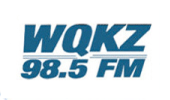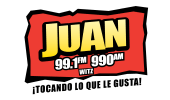Patoka Sportsman 1-15-22
Patoka Sportsman 1-15 & 1-16-22
January 30 kicks off the 3D archery shoots in the area with a shoot at St. Anthony Conservation Club. The next shoot will be February 6th at Branchville followed on Feb. 13 at Beaver Lake, Feb. 20 at Patoka Lake and Feb. 27 at St. Anthony CC.
The 11th Annual 3D Archery Expo will be held Saturday, March 26 at the St. Anthony Conservation Club. Registration begins at 8 AM and runs through 1 PM. The 30 target shoot will feature Sasquatch & other new targets. Shooters will be entered for a chance to win a St. Anthony Mill mineral package. Cost to enter is $10 and if you’re under 10 you can shoot free. Shooters will be shooting for over $3,000 in prizes at the prize target. Bow raffle tickets will be sold on site or from club members. An official scorer will be on site to measure antlers. Food and drinks will be available. Check out the on-site vendors, DNR< new truck & ATV displays. Members from Bowhunt or Die will also be on-hand. Find St. Anthony Conservation Club on Facebook or call 812-630-1670 for more information.
Dubois County Sportsmen’s Club will have their January meeting on the 24th at 7 PM at the Jasper Moose Lodge. The gun raffle will also be held that evening. If you’re a club member and still have tickets to sell get busy and turn them in either at the Great Outdoors or bring them that night. Ticket sellers are encouraged to bring larger bills to make counting easier that evening. Members are invited to bring a guest to the meeting and let them observe what the DCSC is all about.
The Hunters for the Hungry had a total of 106 deer donated this past season. A big thanks to all the hunters who donated deer. Everyone that did donate will be entered into a drawing for a gun donated by Dr. Greg Gordon and Jasper Optical Lab. The gun will be given away at the January 24 meeting at the Jasper Moose.
For the first time, Indiana DNR’s hatchery system was successful in producing advanced walleye fingerlings (measuring 5-7 inches) in large numbers for annual fall stockings. Hatchery biologists at Fawn River State Fish Hatchery finished stocking these larger fish alongside walleye stock (measuring 6-8 inches) purchased from a private commercial fish supplier.
Predation is a huge factor limiting walleye stocking success. Smaller fingerlings (measuring 1-2 inches) were traditionally stocked in the spring and were often eaten before they could attain a mature 14 inches. Biologists adjusted their stocking schedule to allow more time for the fish to grow in the protected hatchery system, giving them time to outgrow predators prior to stocking.
Due to a lack of suitable spawning habitat, walleye are unable to maintain their numbers naturally in many of Indiana’s lakes. Stockings are required to maintain many of the fisheries Indiana’s anglers enjoy. Find out how many and where fish were stocked online.
One of the lesser-known Hoosier fish is cisco (Coregonus artedi), the only cold-water fish species native to Indiana’s inland glacial lakes. As early as 1900, cisco could be found in 45 different glacial lakes in the northern portion of the state, but decades of cold-water habitat loss have reduced that to seven lakes. These slender, silver-colored fish spend much of the year 75 feet below the surface but in December, cooling water temperatures signal cisco migration to traditional spawning areas in shallower water.
This year, DNR fisheries biologists collected cisco from Crooked Lake’s frigid waters in partnership with researchers from the U.S. Geological Survey (USGS). The collaborative project will gather data about cisco’s tolerance to water temperature changes compared to the tolerance of more northern populations elsewhere in the Midwest. This project will provide a better understanding of possible variations in thermal tolerance between cisco populations, which will help managers select appropriate populations to collect cisco from for future restoration efforts.
The Natural Resources Commission (NRC) has given preliminary adoption to the rule changes governing fishing tournament licenses/permits, trapping wild animals, and registering to be an organ donor through the DNR’s license system. The deadline for submitting comments has been rescheduled to Friday, Jan. 21. For more information about the proposed changes, visit our website.
Public comments can be submitted online to the NRC. Click on “Comment on this Rule” next to the “Fish & Wildlife and Law Enforcement Miscellaneous Rule Amendments.”
The rescheduled virtual public hearing will occur on Thursday, Jan. 20 at 7 p.m. ET. Individuals may join the hearing in two ways:
- To join by phone using only audio, please dial 1-240-454-0887. When prompted, enter access code 23034329797##.
- To join using video, go to this website address, enter the meeting number (2303 432 9797), and password (5RPf753W4Zp). Please note: If you have never used WebEx, we suggest that you begin the process at least 10 minutes early because you will be prompted to download WebEx before joining the meeting.
The statewide light goose conservation order is open from Feb. 14 through March 31. This is a continental effort to reduce snow and Ross’s goose populations by allowing hunting for these species outside of the regular season. An Indiana hunting license, Indiana waterfowl stamp privilege, and a free permit are required to participate, though a federal duck stamp and HIP registration are not necessary. The free permit and additional information are available online.
Hunting seasons are winding down, but there are still opportunities for ducks, squirrels, and rabbits. Late season hunting brings new challenges. Animals are often more wary after surviving several months of hunting pressure. Additionally, freezing temperatures, snow, and ice can make for tough conditions for the hunter. Be sure to dress appropriately. Hunt using a layering system - a moisture-wicking base layer like merino wool against your skin, a mid-layer of fleece or a down jacket to insulate and hold body heat, and a weather-resistant shell for your outer layer to protect you from wind and precipitation. Take a look at hunting seasons dates before heading out for your first hunt in 2022.
Multiple hunting and trapping seasons close within the next month:
Deer Reduction Zone: Ends Jan. 31
Raccoon & Opossum (hunting, trapping): Ends Jan. 31
Gray & Fox Squirrel: Ends Jan. 31
Quail (South of I-74): Ends Jan. 10
Mink, Muskrat, & Long-tailed Weasel: Ends Jan. 31
Red & Gray Fox (trapping): Ends Jan. 31
North Zone Duck: Ends Jan. 3
Central Zone Duck: Ends Jan. 9
South Zone Duck: Ends Jan. 23
Indiana DNR’s gray fox research project is ongoing and we need your help reporting sightings of live gray foxes or roadkill. Gray foxes can be identified by their brown ears and legs. A red fox will have black legs and ears. Learn more about the project and report sightings online.
Atterbury Fish & Wildlife Area (FWA) is one of many DNR properties open to all. With approximately 5,000 acres, it is a popular destination for outdoorsmen and women located only a half hour from the southern portion of Indianapolis. Visitors can enjoy public lands open to hunting, fishing, wildlife watching, boating or kayaking, and an excellent shooting range. Check out our video to learn more about this special property.
Indiana residents are more likely to see coyotes during wintertime, but sightings are no cause for alarm. They become more active during winter as young coyotes leave their families to find a new home and begin breeding. Coyotes may look larger than they are due to their thick winter coats, but the average coyote weighs only 20-30 pounds.
The Indiana Nongame Wildlife Fund turns 40 in 2022. DNR will celebrate by sharing 40 stories that highlight the accomplishments that were made possible through the generosity of donors, partners, and volunteers. Established in 1982, the dedicated fund supports nongame and endangered species conservation in Indiana. These wildlife species and their habitats are essential to our quality of life - from improving environmental health to providing opportunities to see beautiful and unique animals across the state. Don’t miss upcoming stories - sign up to receive Nongame Wildlife Fund News.
The 2022 Indiana state park passes, lake permits, off-road cycling permits, and horse tags are now available at property offices and front gates, and online. A resident annual entrance pass costs $50. A nonresident annual entrance pass for visitors who live outside the state costs $70. Golden Hoosier Passports cost $25 and are available to all Hoosier residents 65 and older.
Mark your calendars for Eagle Watch season at Indiana State Parks. January and February bring concentrations of bald eagles to areas of open water, and several of our properties host guided car caravans and talks where you can see these majestic birds. Advance registration is generally required for these events, and some may have associated program fees. Dates include:
Jan. 22-30 – Monroe Lake Eagles over Monroe
Jan. 28-30 – Eagles in Flight Weekend at Turkey Run State Park
With the inevitable upcoming drop in temperatures across the state, Conservation Officers advise Hoosiers on the potential hazards of being on frozen lakes, ponds, rivers, and streams. It’s also important to keep a watchful eye for other people who may venture out on neighborhood retention ponds, lakes and other waterways and find themselves in trouble.
Every winter, thousands of Hoosiers safely enjoy fishing, skating, hiking, or just sliding around on frozen ponds and lakes. And every year, people drown after falling through ice. Don’t let this happen to you.
Winter is a great time to visit the beauty of the parks and enjoy savings at the inns. From lodge rooms to cabins, inns offer accommodations located in the most beautiful places in Indiana. Turkey Run Inn, Abe Martin Lodge, and Potawatomi Inn offer cabins as well as lodge rooms. Stay two nights for the price of one, Sunday–Thursday only, through Feb. 24, 2022. Call and reserve at 1.877.LODGES1.
For the first time since 2006, Indiana DNR has increased fees for hunting, fishing, and trapping licenses. Commercial license fees also increased, some for the first time since the 1980s. The increases will be applied to personal licenses starting with the 2022-23 license year (April 1, 2022 – March 31, 2023) that will go on sale in January. The new fees allow DNR to maintain core programs, including habitat restoration, maintenance of public lands, scientific research and education, and expansion of other services to manage Indiana’s fish and wildlife for everyone to enjoy. Funds will also go to the DNR Division of Law Enforcement to ensure it is equipped to provide public safety and enforce the laws governing natural resources.




